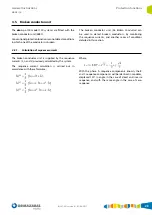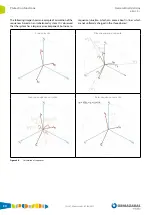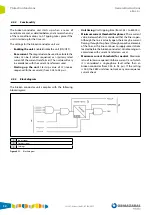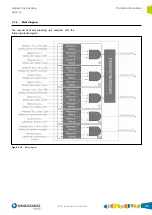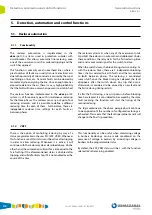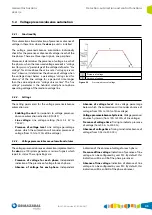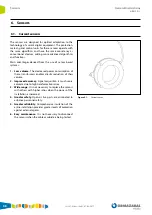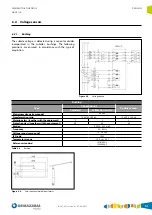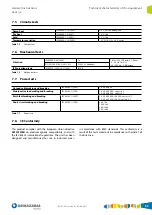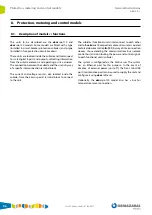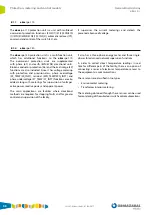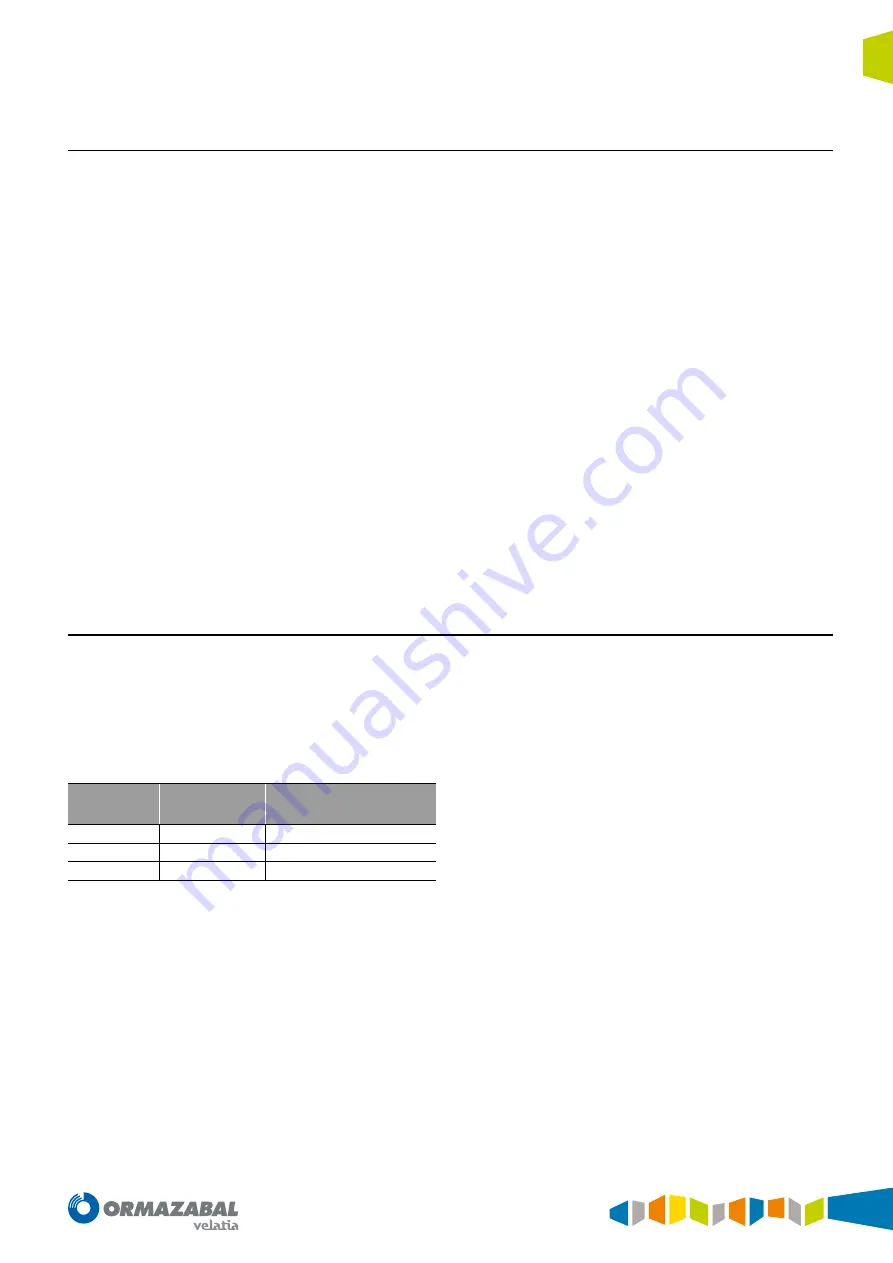
IG-267-EN versión 01; 07/04/2017
43
General Instructions
ekor
.rpa
Detection, automation and control functions
5.1.3. Settings
The setting parameters of the recloser automation are:
•
Enabling the unit
: Corresponds to recloser automation
activation (ON/OFF).
•
Number of reclosings
: Defines the number of reclosings
(from 1 to 4).
•
Reclosing time for phases
: Time which passes from
tripping of one of the phase overcurrent units until the
reclosing order is given. This can be used to define a
different timing for each of the reclosing orders, from the
1st to 4th (from 0.05 s to 600.00 s for the first reclosing,
and from 1.00 s to 600.00 s for other reclosings).
•
Reclosing time for neutral
: Time which passes from
tripping of one of the neutral overcurrent units until
the reclosing order is given. This can be used to define a
different timing for each of the reclosing orders, from the
1st to 4th (from 0.05 s to 600.00 s for the first reclosing,
and from 1.00 s to 600.00 s for other reclosings).
•
Unit X reclosing permission
: This setting can be used
to individually configure which overcurrent units cause
reclosing and which do not once tripped (ON/OFF).
•
Reference voltage standby time
: Defines the time
to wait after the overcurrent unit trips until the Vref
programmable status is set to 1 (from 1.00 s to 600.00
s). The automation will pass to final tripping if the status
does not set to 1 during this time.
•
Safety time after reclosing for phase faults
: Defines
the time passed from the recloser giving the closing
order until a new cycle can be carried out (from 1.00 s
to 600.00 s). This time is used if reclosing is caused by a
fault between phases.
•
Safety time after reclosing for earth faults
: Defines
the time passed from the recloser giving the closing
order until a new cycle can be carried out (from 1.00 s
to 600.00 s). This time is used if reclosing is caused by an
earth fault.
•
Safety time after external or manual close
: This is
defined as the time the recloser waits to pass into idle
condition following a manual close, whether locally
or remotely (1.00 s to 600.00 s). If a trip occurs during
this time period, the recloser will signal final trip due to
manual closing against short-circuit. The recloser does
not pass to idle status until this time expires.
5.1.4. Recloser statuses
The recloser automation implemented in the
ekor
.rpa-100
system generates a series of signals which report its status.
These statuses are:
•
Manual/automatic
: Depending on the enable setting
and the orders received, the recloser may be in manual
or automatic status:
Status
Activation
setting
Manual/automatic
order
Automatic
On
Automatic order
Manual
On
Automatic order
Manual
Off
Any order
Table 5.1.
Manual/automatic
When the enable setting changes from OFF to ON, it
starts from automatic status. If it is in manual status
(either due to the enable setting or an order received),
the recloser automation will not be operational in the
event of overcurrent tripping.
•
Blocked/unblocked
: Regardless of whether recloser
automation is in manual or automatic, it may be blocked
due to errors detected by the switch error automation.
If this automation detects any failure in the switch, the
recloser will switch to blocked status, preventing the
recloser from advancing in the event of overcurrent
trips.
The recloser automation will only be operational in the
event of different overcurrent trips if it is in automatic status
and unlocked. In these statuses it generates the following
signalling:
•
Standby
: Indicates that the recloser is awaiting
overcurrent trips in order to start up with the recloser
cycle.
•
Under way
: Indicates that the recloser is in the recloser
cycle. Either by timing a recloser time, or by timing
safety time after reclosing.
Summary of Contents for ekor.rpa Series
Page 115: ......

